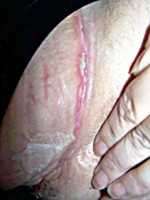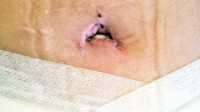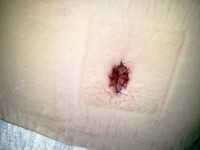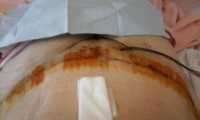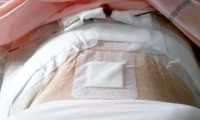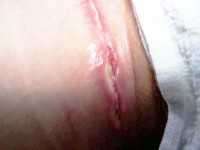Tummy tuck complications
Folk wisdom says: be afraid of complications – not to go to the surgeon. And if you really want? Then you need to know about the possible risks and assess – game worth the candle or better not to risk it and stay with your own interests. We’ll tell you about the most common complications after tummy tuck.
The frequency of complications
According to statistics, in 2-5% of cases of tummy tuck may develop post-operative complications. Surgeons are aware of them and always warn patients about the potential risks, but it can not be entirely ruled out. And all because each person has their own reaction to the surgery.
The most common tummy tuck complications
Infection. Surgery – it’s always a scalpel, damage the skin, and thus the risk of getting an infection in the body that can cause inflammation. However, in the era of antibiotics surgeons do not really afraid of postoperative infections. With proper handling and care of seams, the development of this complication can quickly negate.
Seroma. The second most common complication after surgery is the formation of seroma (accumulation of fluid under the skin, caused by the disturbance of the lymphatic capillaries). Most often, this complication occurs after abdominal plasty or liposuction, during which a large amount of subcutaneous fat is removed from the patient’s problem areas. However, do not worry ahead of time. Yes, seroma – a phenomenon unpleasant, but it possible quickly eliminate. To solve the problem of excess fluid for this is simple enough drainage of the postoperative cavity.
Hematoma. Hematoma or bleeding under the skin can occur both during and after tummy tuck. Hematoma can be eliminated by timely removal of blood from the bruised area, as well as the use of special drugs and, of course, wearing of compression underwear (tight bandage). Surgeons say that right, and, most importantly, timely response to the formation of a hematoma allows to get rid from the problem without consequences.
Sealing of scars. It happens that after abdominoplasty a cosmetic seam begins to thicken, harden and becomes thicker. This condition requires medical treatment with drugs that improve blood circulation. As for the surgical correction of postoperative sutures, the surgeons perform it only in the most extreme cases, since it is possible recurrence of the situation.
Necrosis of the skin. During abdominoplasty the abdominal skin is separated from an underlying fascia so that the blood vessels, connecting the two layers of fabrics, will be cutted, cauterized or bandaged. Since they provide most of the blood supply to the skin, now the blood will flow to it from the neighboring areas of skin and fat that may not be sufficient to supply the tissues during the healing process. In this case, comes necrosis of skin and fat. Typically the skin dies in the area between the boundary of the growth of pubic hair and the navel, above the scar. Depending on the size of the affected area, it either will be healed on its own within a few weeks, or requires additional surgery.
Discomfort. From moderately to severely. The tighter the surgeon tightens the fascia, the more discomfort. Expect to take pain medication for 3-7 days.
Swelling. The maximum time is within 1-3 weeks. Most of the swelling goes 4-6 weeks later, but may take several months until disappearance.
Numbness. Numbness of the abdomen is quite possible, and lasts up to 6 months or more. The skin between the navel and border of pubic hair is likely will restore the sensitivity, but not until the end. Most patients it does not bother.
Rupture of seam. If the seam, which pulls together fascia, will disperse, fascia is pretty fast again will be weakened. Correction of this defect will require reoperation and imposing a new seam. You can minimize the likelihood that seam will disperse, if you do not strain your abdominal muscles during the first four weeks after surgery.
Necrosis of tissues around the navel. In case of violation of blood supply the skin of navel may wither away, and at this point formed scar. Due to the fact that the belly button and in its normal state resembles scar, the new scar is usually not create aesthetic problems.
How to avoid tummy tuck complications?
Choose an experienced physician rather than the hospital. Remember, the best recommendation – not the number of diplomas on the wall in the office of the surgeon, and the number of performed surgeries, the queue under office and the recommendations of your friends and acquaintances. If surgery performed by a skilled surgeon, it itself and the postoperative period, most likely to be smooth. However, undesirable effects may occur even in ideal conditions.
Be honest. Any chronic disease during surgery may give additional complications. Knowing this, do not dissemble with the surgeon. Better tell him frankly about the weak points of your body, and then you will not treat complications.
Pass a medical examination. To exclude the possibility of unforeseen situations, before surgery pass examination of major organs: kidneys, heart, and liver. It will not hurt as analysis of a blood clotting.
Carefully follow all the instructions of the doctor. Namely: wear a compression garment (or dressing), take prescribed medications, come on inspections and ligation on time and in any case do not smoke (2 weeks before and 2 weeks after a tummy tuck). Last is extremely important since during smoking of small capillaries is spasm, which can lead to necrosis of the skin.
